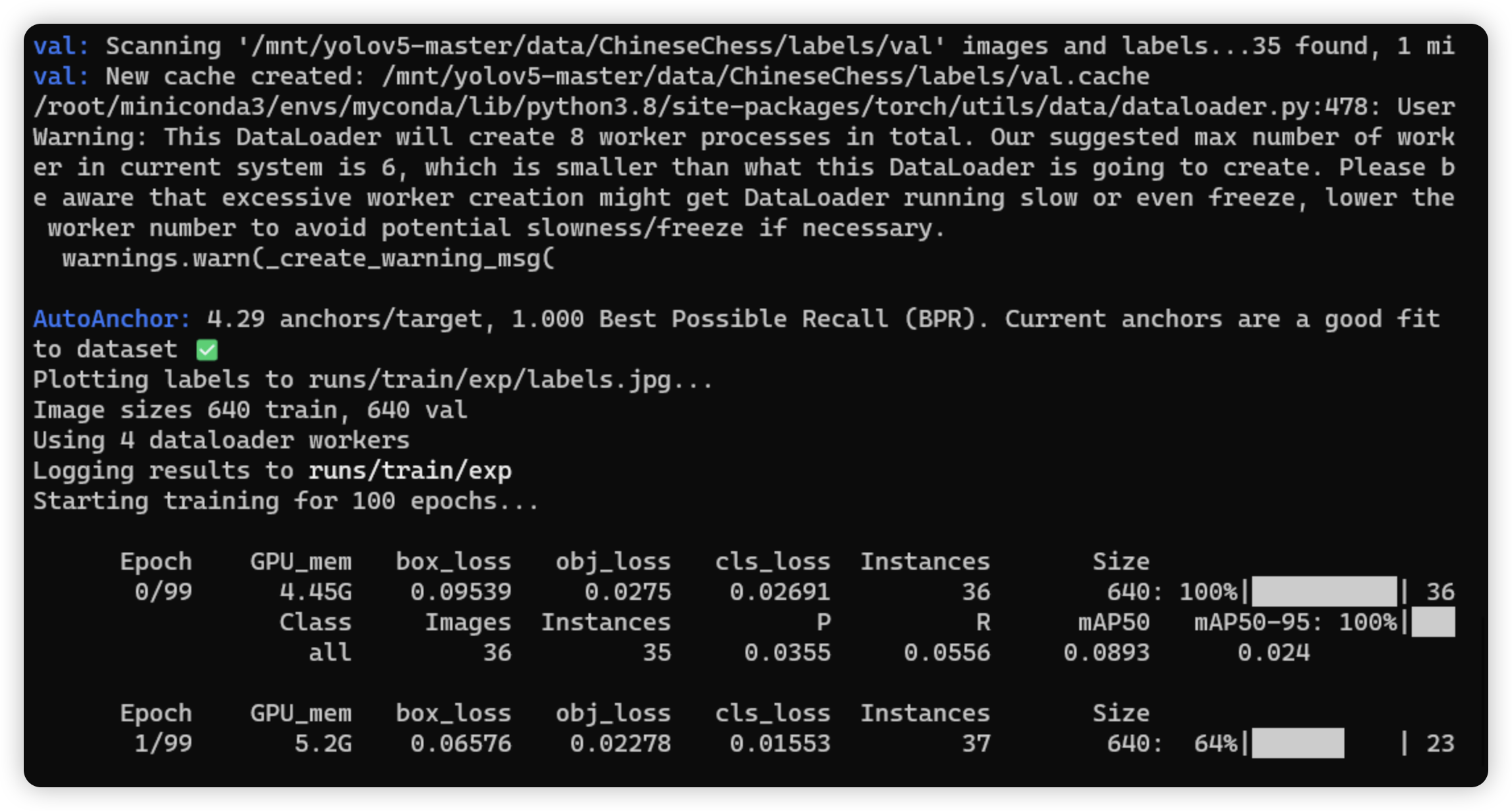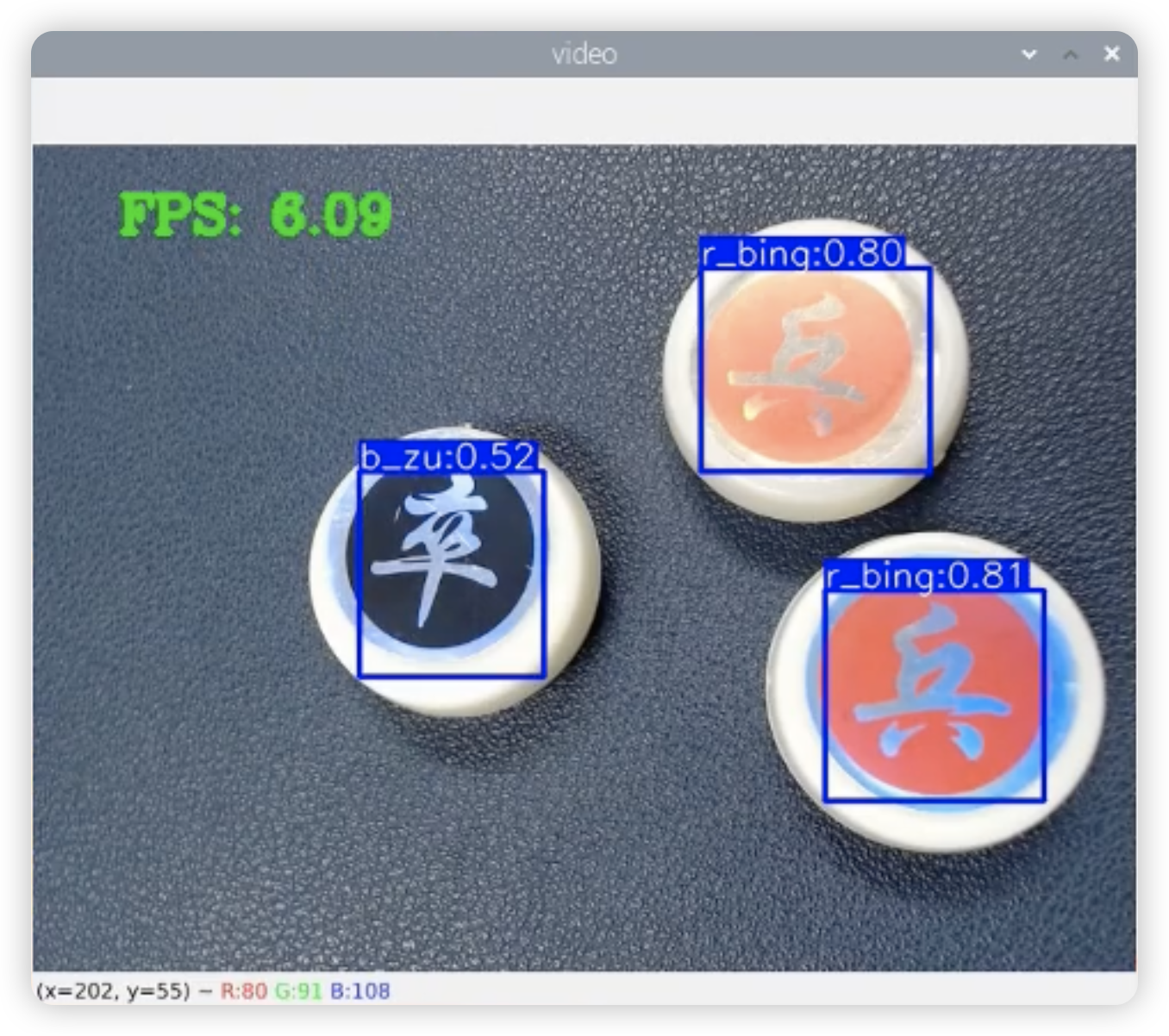1. Selected and customized the YOLOv5 model for Chinese chess annotation data.

2. Conducted testing and analysis of the model.

The results indicated exceptional accuracy in recognition capabilities. However, a significant shortfall was identified in terms of efficiency, with the model taking approximately 6 seconds to process a single image.
3. Implemented model optimization.
We substitute the YOLOv5 model with a more lightweight variant, YOLOv5-lite and convert the model into the ONNX format to leverage hardware acceleration, thereby enhancing computational efficiency.
4. Deployed the model on edge computing devices using ONNXRUNTIME.

This deployment resulted in maintaining a similar rate of recognition success while significantly increasing the frame rate of recognition to 6-8 frames per second, an efficiency improvement of approximately 97%. (The rate of rocognotion of b_zu is due to these set of chess is not made of wood with word engraved in it, meaning it is better change a set of chess whose texture is not affected by reflection)
5. Future plans
Future plans are aimed at further enhancing system performance and expanding functionalities. This includes:
- Integrating a TPU acceleration stick (with subsequent conversion to OpenVino) or switching to a Jetson Nano platform for increased computational power. This will involve converting the ONNX model to the TensorRT format and using DeepStream for accelerated inference and improved response times.
- Incorporating reinforcement learning and robotic arm technology to develop an automated feature for playing Chinese chess, thus combining advanced AI strategies with physical interaction capabilities.